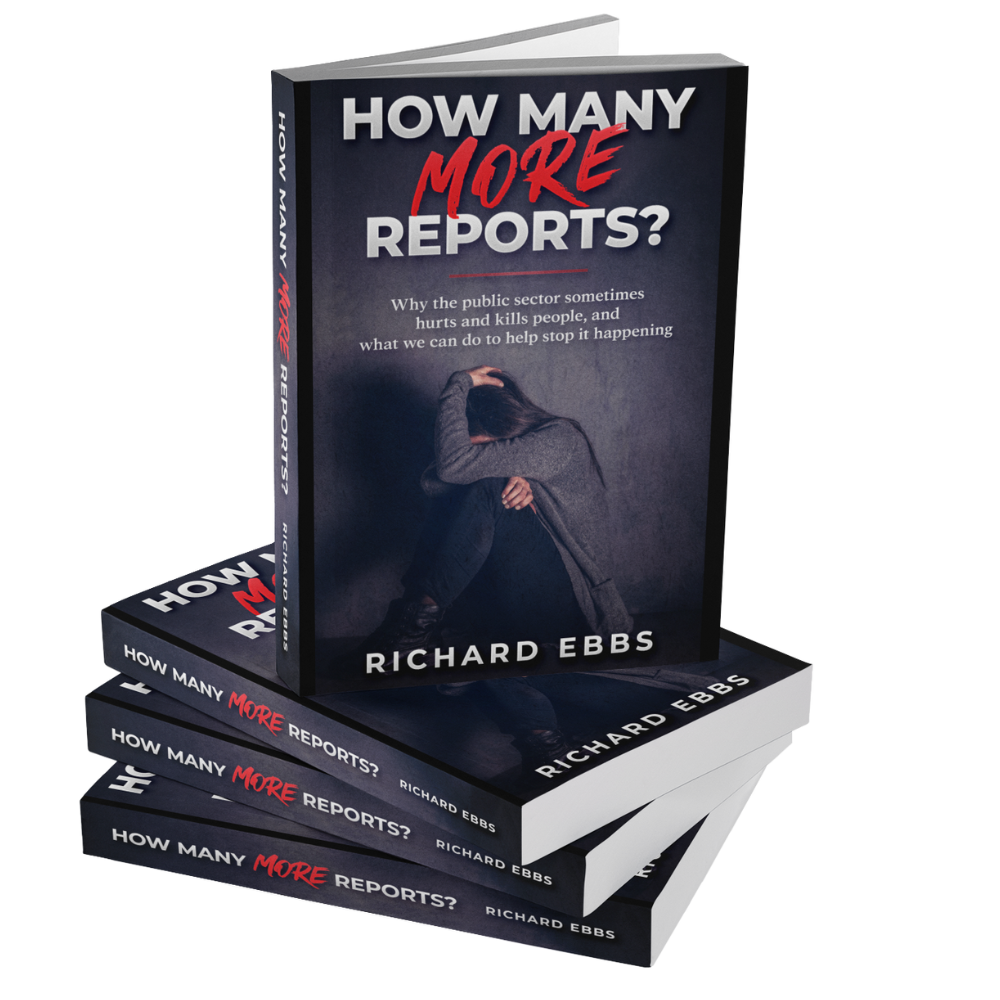
HOW MANY MORE REPORTS?
Why the public sector sometimes hurts and kills people, and what we can do to help stop it happening
For decades now, the pattern has been the same. Public sector organisations, often packed with wonderful people, and doing vital work. Yet, the reports and inquiries continue, trying to explain why people have died and suffered.
This book is a walkthrough of organisational life to find out what works and what doesn’t. We examine the configuration of these organizations, as well as the forces and environments that influence staff behaviour, in order to identify potential issues and weaknesses.
I use my experience as a former low-ranking employee in the public sector and a former senior manager in the private sector to shine a light on areas where others have not. It is here that this book aims to have an impact.
Excerpts From The Book
THE TOPICS COVERED
Amongst the topics covered: By looking at these reports, you can identify common themes that often happen. This leads you to realise that every time you see one of these reports, there are three questions you might ask. In every example, you can ask one, two, or even all three questions every single time.
We look at how large hierarchical organisations work to find what is good and what might be problematic, along with what can and cannot be changed. The signals and signs that staff pick up on and how it shapes what they do, including a look at who gets a parking space and an office at work and whether it matters.
In our journey through organisational life, we ask why people sometimes cannot speak up, even if they know they should. This area of challenging is the biggest chapter of the book for a reason; it’s quite complicated, even though many of us in different settings, like at home, have no problem at all in speaking up. Along with this, we look at whistle blowers and try to work out why they often come out second best. In this mix we also look at NDAs (Non-Disclosure Agreements), commonly called gagging clauses, and ask who is standing up for the taxpayer and students when money is being paid out to get these agreements signed? This NDA examination also comes with two ideas which would ensure a fairer, more transparent approach to their use.
Team dynamics comes in for attention, with a look at a particular issue which can easily be missed but which can paralyse teams. Along with advice to the police on a specific area they should look at in ethics & honesty, especially for trainee officers.
We also hunt down the one thing we all seek at work, and it’s not money!
As we near the end of our assessment of organisational life, we also try to work out why values, one of the most powerful tools available, are so often misused and misunderstood. We look at the mistakes often made here and how we can avoid these.
So, can we stop the reports? I think we can, but to do that we need to understand the organisations and systems that generate the problems in the first place.
ABOUT THE AUTHOR
Richard Ebbs is a former low-ranking employee in the public sector and a former senior manager in the private sector. This insight and ability to flit between the two views allows a dive into those public sector scandals and disasters to try and work out exactly what is going on. Additionally, as a systems thinker and someone who reads and studies every day, he hopes to bring a different perspective as to why our public sector struggles to learn the lessons it says it wants to learn.
